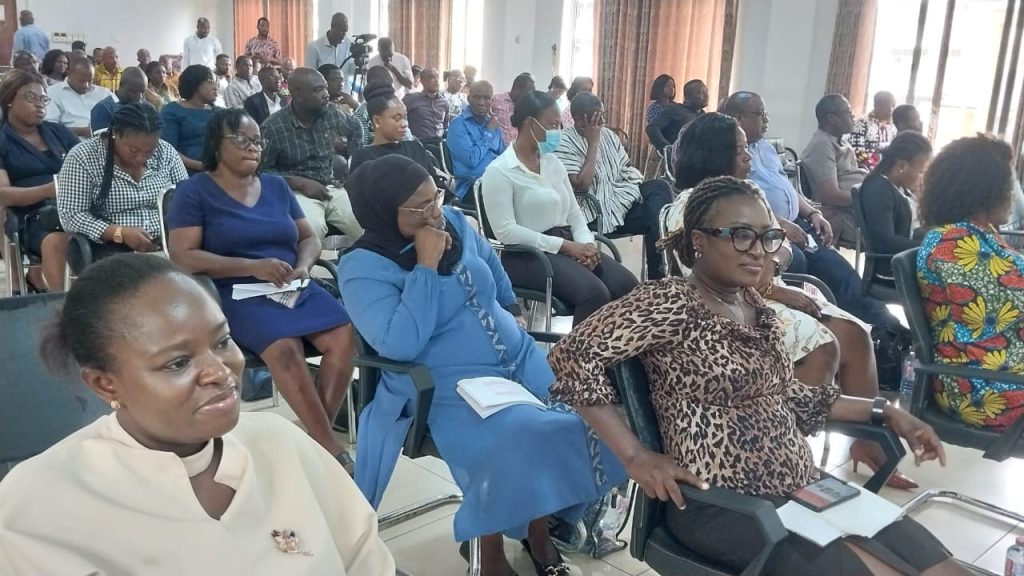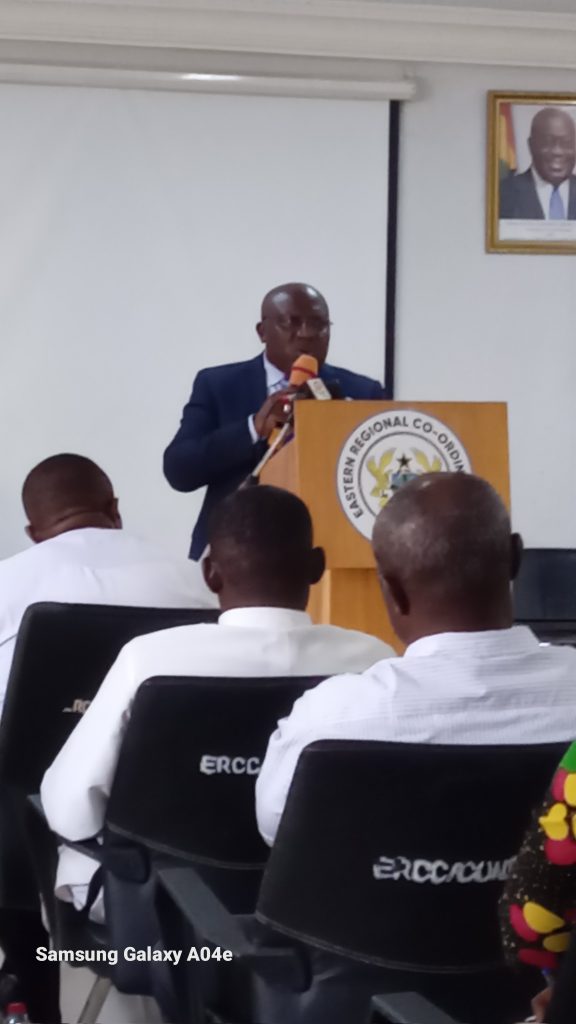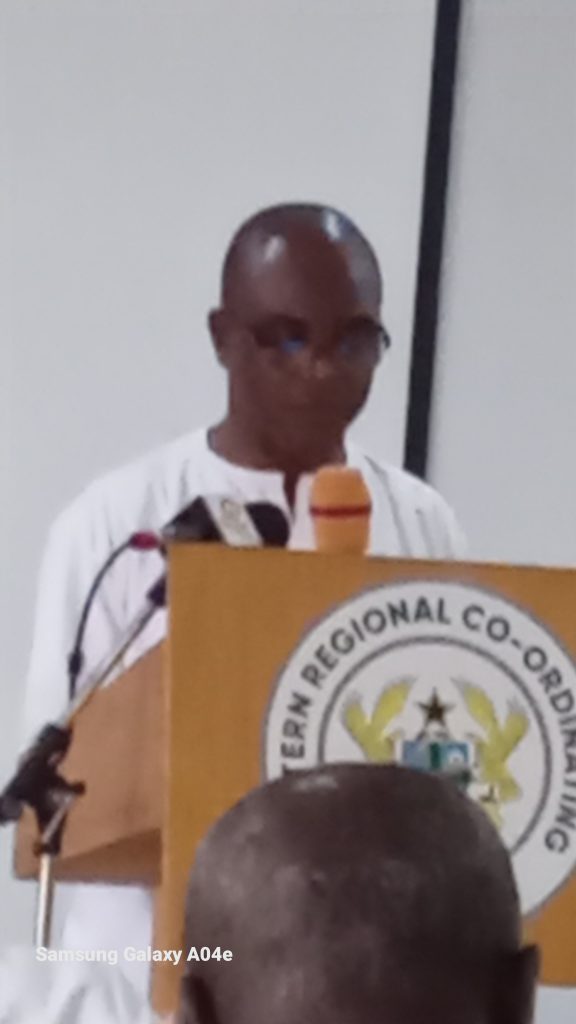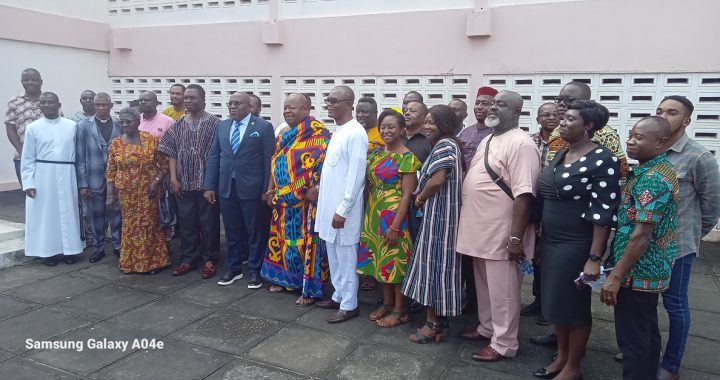As part of the yearlong 60th Anniversary Celebration of the Ghana Institute of Architects (GIA), themed “The Architect and the Community,” the institute is organizing Town Hall Meetings in eleven regions, including the Eastern region.
These Town Hall meetings are collaborative efforts involving the government, represented by the Municipal and Metropolitan Assemblies (MMDAs) under the leadership of the Regional Coordinating Council, local Chiefs, community members, and the media. The purpose of these meetings can be categorized into three distinct objectives:
1. Introduction of the Ghana Institute of Architects to the region: During these sessions, the institute aims to provide a comprehensive understanding of the architectural profession and the pivotal role architects play in the physical development and transformation of nations.
2. Engagement with Stakeholders: The GIA seeks to engage with various stakeholders, including government representatives, traditional Chiefs, local residents, and media professionals in the region. This dialogue aims to shed light on the unique challenges and issues affecting the built environment within the region. Topics of discussion may encompass land ownership, urban planning, development control, and the need for technical expertise, among other pertinent matters.
3. Exploration of Collaborative Opportunities: Another focal point of the Town Hall meetings is the exploration of collaborative opportunities. Discussions will revolve around topics such as permitting processes, development control mechanisms, the formulation of Master Plans, and technical support for capacity building. The GIA envisions an effective partnership between the institute and the respective MMDAs within the region to enhance architectural practice and development.

GIA was founded on November 9, 1962, through the dedicated efforts of key individuals such as Arc. Victor Adegbite, Arc. D.K. Dawson, Arc. T.S. Clerk, Arc. J.S.K. Frimpong, Arc. P.N.K. Turkson, Arc. J. Owusu-Addo, Arc. K.G. Kyei, Arc. C. Togobo, and Arc. Kingsley Osei, the Ghana Institute of Architects received significant encouragement from Dr. Robert Patrick Baffour. Dr. Baffour, regarded as the father of Engineering and the first Vice Chancellor (1961-1967) of the University of Science and Technology (UST), now known as Kwame Nkrumah University of Science and Technology (KNUST), played a pivotal role in the institute’s establishment.
The origins of the GIA’s formation trace back to the involvement of Arc. Victor Adegbite, an American-trained Ghanaian Architect who was collaborating with Professor L. Prasad, a United Nations expert in Ghana, on various matters. They were tasked with studying and proposing a graduate curriculum for the Faculty of Architecture at UST, Kumasi, Ghana. During this collaboration, Dr. Robert Patrick Baffour inquired whether Ghanaian Architects had explored the possibility of establishing the Ghana Institute of Architects, aimed at contributing positively to Ghana’s architectural education and its role in nation-building. This query marked the inception of the institute.
Architecture can be fundamentally defined as the art of shaping space for human habitation. An architect’s role in the built environment extends to designing and configuring spaces for various human activities, including living, working, and recreation. This multifaceted responsibility encompasses not only the creative design and specification aspects but also contract administration, which involves supervision, and ultimately, post-occupancy evaluation.
The Ghana Institute of Architects (GIA) operates as a corporate entity established under the Professional Bodies Registration Act of 1973 (NRCD 143). The practice of architecture in Ghana, an exclusive domain of GIA members, is subject to regulation as per the Architects Act of 1969 (NLCD 357). The Architects Registration Council of Ghana (ARC), an agency under the Ministry of Works and Housing, serves as the regulating authority overseeing the profession.
In the Eastern Region, a significant number of urban municipalities are experiencing rapid growth, marked by the construction of diverse structures and recreational areas. When carefully planned with input from all relevant stakeholders, including architects, this growth has the potential to transform the Eastern Region into a visually captivating area, worthy of admiration through the lens of geospatial cameras.
However, GIA is deeply concerned about the uncontrolled and unregulated nature of development unfolding across the entire country. This disregard for Building Regulations, the Building Code, and other statutory documents governing the management of the built environment is alarming. The Eastern Regional Minister, Hon. Seth Acheampong, emphasized with concern that this erratic infrastructural development not only results in unplanned layouts but also creates an impression that our understanding of land economics is lacking in our built environment and mapping endeavors.

He further observed that the collaborative efforts among key institutions, such as the Land Commission, Physical Planners, Works Engineers of the Assemblies, and Architects, often appear only on paper, but in practice, these entities operate disjointedly, failing to adhere to the layout plans of the areas they oversee. Consequently, this disjointed approach promotes the emergence of slum-like neighborhoods instead of well-structured residential or public communities. This gathering serves as a rallying cry for all stakeholders to unite and address the issues affecting the built environment, working collectively to enhance the beauty of our scenic landscapes.

President of the GIA, Architect Foster Osae-Akonnor, envisions Koforidua as a beautiful, vibrant, and sustainable city in the near future. He believes that realizing this vision requires a concerted effort from all parties involved. He emphasizes the importance of having a shared vision for the development of the physical environment, encompassing the entire Eastern Region, without neglecting any of the region’s thirty-three (33) Administrative Capitals, which plays a pivotal role in achieving the broader regional vision of “a peaceful, progressive, and developed region.”
It is crucial to recognize that architects possess a trained eye that perceives nuances in the built environment that may escape the notice of the general populace. President Osae-Akonnor requests that all thirty-three (33) Municipal and District Assemblies (MMDAs) in the Eastern Region provide drone footage covering their entire boundaries, starting with the administrative capitals. This footage, expected to be submitted no later than December 31, 2023, will serve as the foundational material for the development of a comprehensive Master Plan.
The Ghana Institute of Architects (GIA) stands at a significant juncture as it celebrates its 60th Anniversary under the banner of “The Architect and the Community.” The journey embarked upon during this milestone year is one of collaboration, reflection, and a collective commitment to the betterment of the built environment in Ghana, particularly within the Eastern Region. This anniversary celebration marks not only a historical milestone but also an opportunity for renewed dedication to shaping a brighter, more harmonious, and well-designed future. It calls upon all stakeholders to come together, to collaborate, and to heed the clarion call for the enhancement of our beloved Ghana’s built environment. Let us unite in this shared mission to create spaces that inspire, nurture, and empower the communities we serve, enriching lives and landscapes alike

